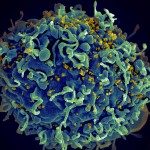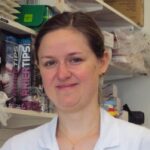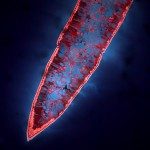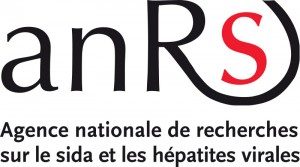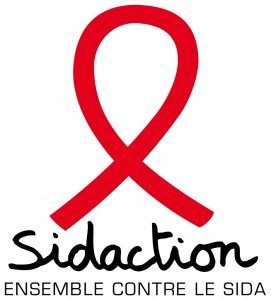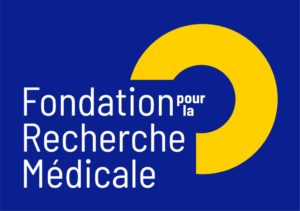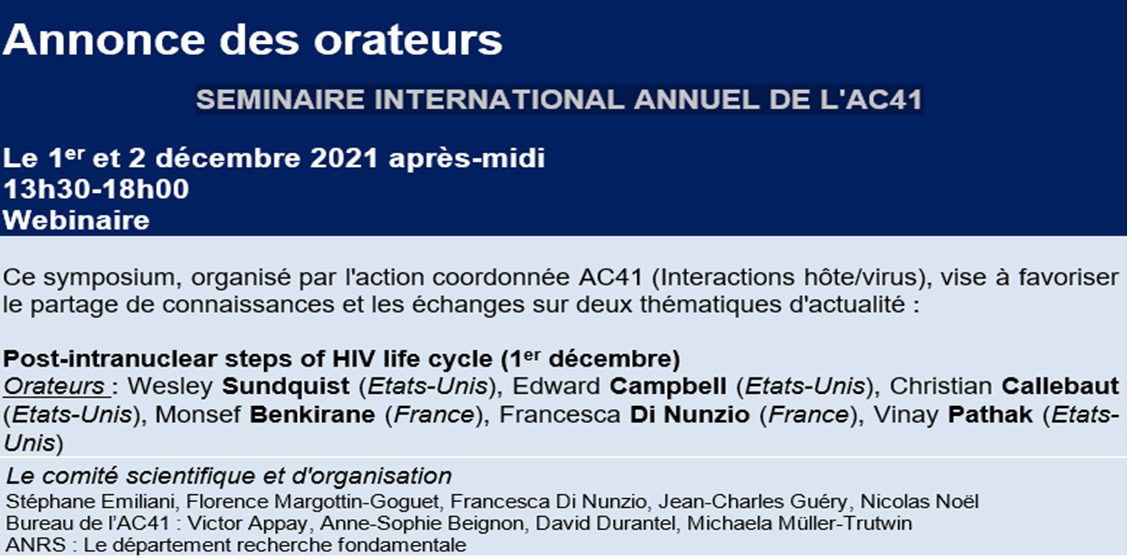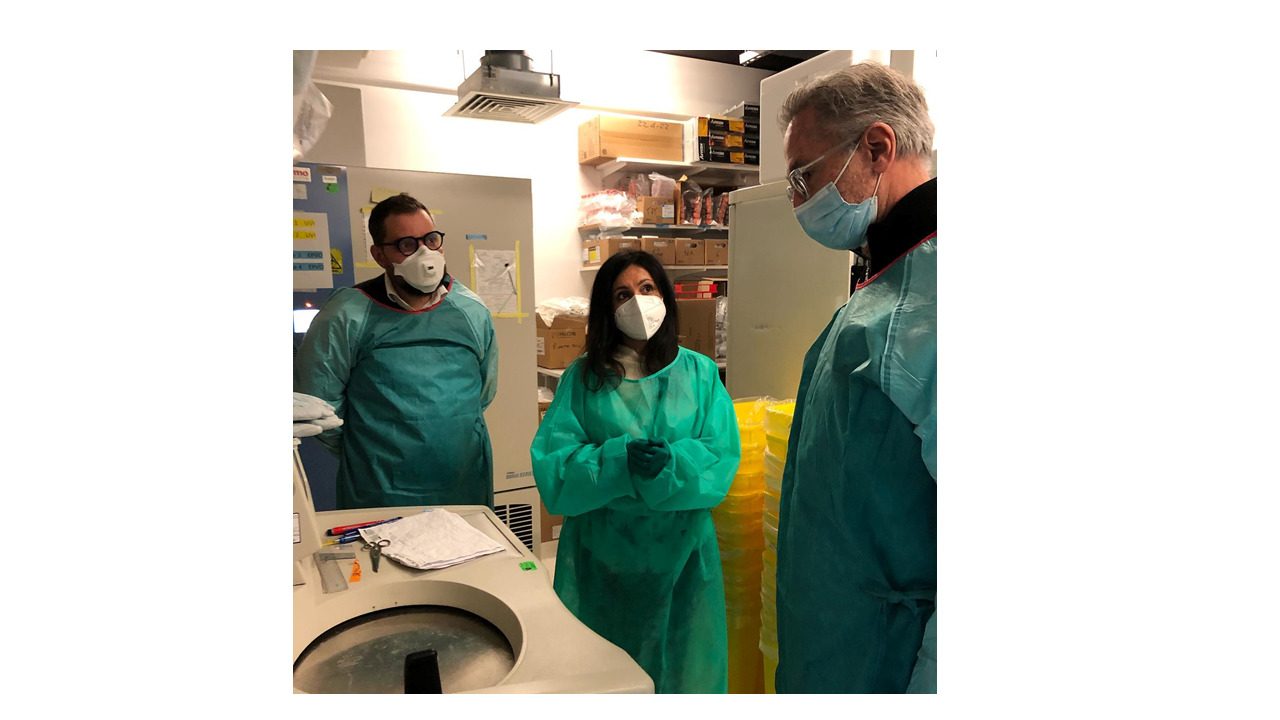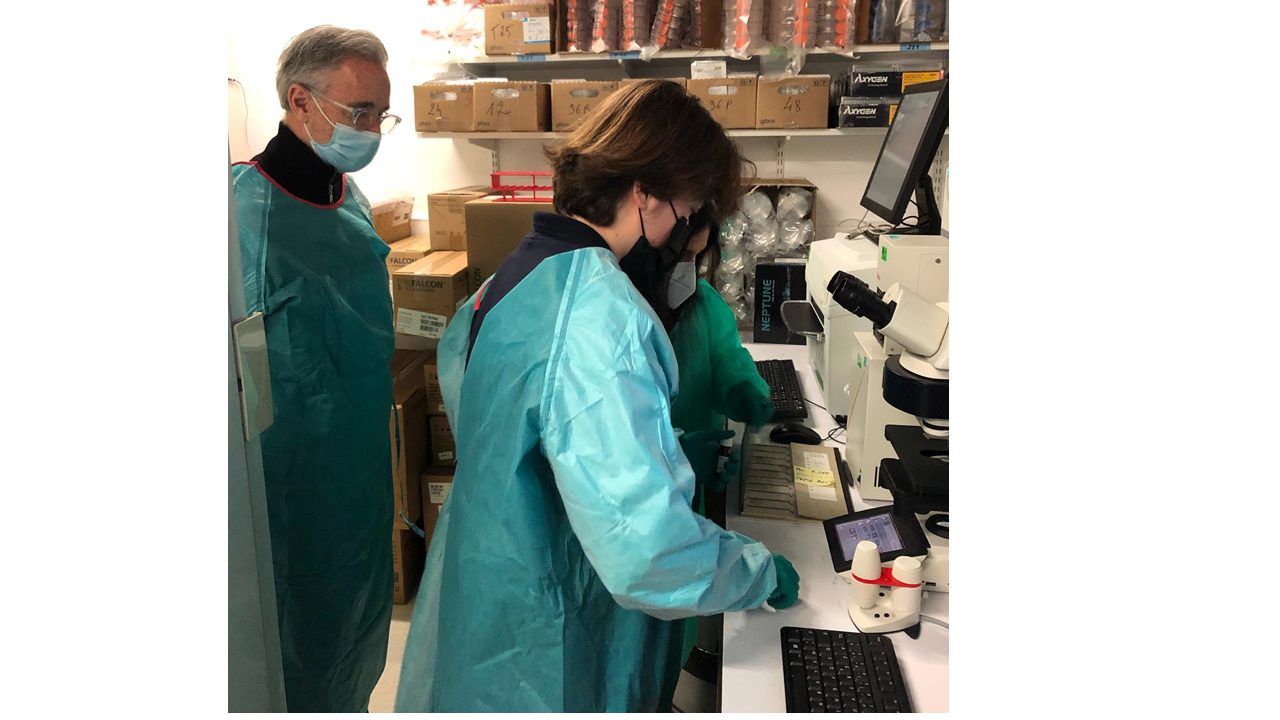Membres

Anciens Membres
Projets
Molecular Virology – Di Nunzio Group: Active nuclear import of the HIV-1 genome into the interphasic nucleus is the key feature that accounts for mitosis independent replication of lentiviruses. It is also at the basis of countless applications of lentiviral gene transfer vectors. We are currently studying the relationships between cellular and viral factors that participate to the viral nuclear import, integration of the provirus into the host chromatin and viral transcription. Ongoing work and research projects include the study of nucleoporins and of the nuclear landscape involved in HIV docking at the NPC, translocation of the HIV pre-integration complex (PIC) through the nuclear pore complex (NPC) and its subsequent integration. We previously showed that RanBP2 the main component of the cytoplasmic filaments of the NPC, mediates the docking of HIV-1 cores through a direct interaction with the capsid protein (Di Nunzio et al., 2012). Nup 153, a dynamic nucleoporin able to shuttle between the nuclear basket and the nucleoplasm, is implicated in the translocation step of the HIV-1 genome through the NPC (Di Nunzio et al., 2013). Instead, the Tpr nucleoporin, the main component of the nuclear basket of the NPC, is not involved in the nuclear import per se, but its knock-down in target cell strongly affects HIV infectivity without inhibiting HIV integration. Tpr is known to modulate the chromatin topology at the immediate vicinity of the NPC. These results support a model where nuclear import and integration are concerted steps, and where Tpr maintains a chromatin environment favorable to HIV replication (Lelek et al., 2015). The projects of the Di Nunzio group will pursue the study of HIV-1 nuclear import mechanisms. This is the crucial step for mitosis-independent replication of lentiviruses but also accounts for the efficient gene transfer by lentiviral vectors in non-dividing cells.
Project 1: Ultrastructural conformation states of HIV-1 during the early steps of viral infection.
When HIV-1 enters in the cells, the capsid (CA) core containing the viral genetic material is released in the cytoplasm. The core is composed by ̴ 1500 capsid monomers organized in hexamers or pentamers to give rise a conical shape of 120 x 60 x 40 nm. This structure acts as a shield against cellular antiviral sensors and maintains an adequate environment for the reverse transcription. However, the capsid is not a passive but it is a dynamic structure that interacts with several cellular factors required for a successful infection. In fact, any change into the amino acidic sequence of viral CA can affect HIV-1 infectivity, highlighting the central role of CA in HIV-1 infection. The lack of appropriate tools to study the dynamics of viral core rearrangements during HIV-1 cytoplasmic journey towards the NPCs and its entrance into the nucleus generates a controversy in the field. We developed correlative light electron microscopy to investigate the state of viral replication complexes at the NPCs and during their nuclear translocation.
We investigate the following steps of HIV infection in primary lymphocytes:
1. Docking/Uncoating (loss of viral capsid)
2. Maturation of the viral pre-integration complex (PIC)
3. PIC composition and morphology during its translocation through the NPC
We recently determined the CA state of viral / host complexes at both sides of the NPC.
We detected by electron microscopy viral complexes near the NE that correspond to core-like structures that we identified by their morphology and by direct gold labeling against CA protein. These cores are in direct contact with the NE near NPC. Using immuno-gold transmission electron microscopy of cores and IN-HA tagged we are able to detect CA proteins in the inner face of the NPCs showing the presence of multiple CA proteins associated to IN. Next to validate that these complexes are potential pre-integration complexes (PICs) we tried to visualize the presence of retrotranscribed DNA in these intermediate states of replication complexes by using correlative microscopy (transmission electron microscopy coupled to fluorescence microscopy, CLEM). This is highly challenging considering that there are no techniques so far that can label by fluorescence the DNA coupled to immune-gold labeling. We set up a breakthrough technology to specifically label the viral DNA in fixed and live samples that we called HIV-1 ANCHOR. This technology is compatible with TEM.
We are now interested to find factors that are able to bind these complexes in the nucleus and that are responsible to induce the viral nuclear uncoating.
Reference:
G. Blanco-Rodriguez, A. Gazi, B. Monel, S. Frabetti, V. Scoca, F. Mueller, O. Schwartz, J. Krijnse-Locker, P. Charneau, F. Di Nunzio “Remodeling of the core leads HIV-1 pre-integration complex in the nucleus of human lymphocytes.” JVI, 2020
Cover JVI, August, 2020
Project 2: Deciphering the early steps of HIV-1 infection in human macrophages: discovery of a new early step mechanism.
This project aims to identify key aspects of the viral replication cycle in terminally differentiated macrophages which are one of the major targets of HIV-1 using fluorescence microscopy approaches, quantitative image analysis and state-of-the art fluorescent labelling techniques. We focused our efforts to address the following aspects of the HIV-1 early infection cycle: in order to replicate, the Human Immunodeficiency Virus (HIV-1) reverse transcribes its RNA genome into DNA, which subsequently integrates into host cell chromosomes. These two key events of the viral life cycle are viewed as separate not only in time but also in cellular space, since reverse transcription (RT) is thought to be completed in the cytoplasm before nuclear import and integration. However, the spatiotemporal organization of the early replication cycle in macrophages, natural non-dividing target cells that constitute important reservoirs of HIV-1 and an obstacle to curing AIDS, remains unclear. In our study we demonstrated that infected macrophages display large nuclear foci of viral DNA and viral RNA, in which multiple genomes cluster together. These clusters form in the absence of chromosomal integration, displace the paraspeckle protein CPSF6 and localize to potential speckles because enriched in SC35. Strikingly, we show that viral RNA foci consist mostly of genomic, incoming RNA in which RT can resume after temporary inhibition of RT and nuclear import. Our findings indicate that nuclear membraneless organelles serve as niches for completion of RT, thus changing our understanding of the early HIV-1 replication cycle in macrophages, with possible implications for understanding HIV-1 persistence.
We propose to unravel the role and the underlying mechanism of CPSF6 cluster formation in HIV-1 infection in human macrophages.
We hypothesized that viral clusters could act as micro-reactors that locally concentrate viral and host cellular factors required for viral replication and/or to protect the virus from cellular defense mechanisms. Another possibility is that this is a self-defense strategy developed by the cell against the viral attack.
Reference:
E. Rensen, F.Mueller, V. Scoca, J. Parmar, P. Souque, C. Zimmer, F. Di Nunzio “HIV-1 genomes cluster in nuclear niches of human macrophages” BioRxiv 2020.
Project 3 HIV-1 and nuclear membraneless organelles
The ultimate goal of HIV-1 is integration into the host chromatin to optimize the release of high levels of viral progeny and discretely coexist with the host. To uncover the HIV-1 DNA fate in the nuclear landscape we directly tracked the viral DNA (vDNA) and the viral RNA (vRNA) by coupling HIV-1 ANCHOR technology with RNA FISH or MCP-MS2 RNA-tagging bacterial system. Our computational imaging analysis revealed that proviral forms are early located in proximity of the nuclear periphery of mitotic and non-mitotic cells. We also observed that HIV-1 infection prompts clustering formation of the host factor CPSF6 restructuring membraneless organelles enriched in both viral proteins and speckle factors. Interestingly, we observed that integrase proteins are retained in CPSF6 clusters, while the late retrotranscribed DNA was excluded from HIV-induced membranelless organelles (HIV-1 MLOs), indicating that those structures are not proviral sites, but orchestrate viral events prior to the integration step. HIV-1 MLOs are in the vicinity of pre-existing LEDGF clusters. Importantly, we identified actively transcribing proviruses localize, outside HIV-1 MLOs, in LEDGF-abundant regions, known to be active chromatin sites. This study highlights single functional host-proviral complexes in their nuclear landscape, which is markedly restructured by HIV-1 to favor viral replication.
Our recent exciting results about nuclear uncoating and nuclear reverse transcription completely change our view on HIV-1 early phases of the life cycle. Apparently, nuclear import precedes the complete uncoating and the reverse transcrip-tion can occur in nuclear HIV-specific membraneless organelles (HIV-1 MLOs), at least in macrophages. Does the nuclear reverse transcription represent and advantage for HIV? Is it correlated to an efficient replication? All these questions open new frontiers of research based on the role of HIV-1 MLOs on viral persistence and rebound, which represent the major obstacle to cure AIDS. Surely, new single-cell cutting-edge technologies are allowing and will continue to allow to build a new model of HIV-1 early steps.
Scoca V., Louveaux M. *, Morin R. *, Ershov D., Tinevez J., Di Nunzio F. . Direct tracking of single proviruses reveals HIV-1/LEDGF complexes excluded from virus-induced membraneless organelles.(submitted) BioRxiv doi.org/10.1101/2020.11.17.385567
Financements
Principales publications
-
2023Stress-induced condensate switch awakens sleeping viruses., Cell Host Microbe 2023 May; 31(5): 679-680.
-
2023HIV-Induced CPSF6 Condensates., J Mol Biol 2023 Apr; (): 168094.
-
2023Biomolecular condensates: insights into early and late steps of the HIV-1 replication cycle., Retrovirology 2023 Apr; 20(1): 4.
-
2023HIV-induced membraneless organelles orchestrate post-nuclear entry steps., J Mol Cell Biol 2023 Apr; 14(11): .
-
2018Nuclear Pore Complexes, Genome Organization and HIV-1 Infection, Nuclear Pore Complexes in Genome Organization, Function and Maintenance .
-
2012TNPO3 is required for HIV-1 replication after nuclear import but prior to integration and binds the HIV-1 core., J Virol 2012 May; 86(10): 5931-6.
-
2009Structural basis for functional tetramerization of lentiviral integrase., PLoS Pathog 2009 Jul; 5(7): e1000515.
-
2007Transduction of human hematopoietic stem cells by lentiviral vectors pseudotyped with the RD114-TR chimeric envelope glycoprotein., Hum Gene Ther 2007 Sep; 18(9): 811-20.
-
2006Correction of junctional epidermolysis bullosa by transplantation of genetically modified epidermal stem cells., Nat Med 2006 Dec; 12(12): 1397-402.
-
+Voir la liste complète de publications
Virologie Moléculaire Avancée
- Article on Transversal from Sidaction:
https://transversalmag.fr/articles-vih-sida/1356-VIH-La-transcription-inverse-vue-sous-un-nouveau-jour
-
CROI 2021: Deciphering the host nucleus subversion by HIV-1 to replicate
http://www.croiwebcasts.org/p/2021croi/croi/78
- ANRS AC41 (host/viral interactions):
-
https://www.franceinter.fr/emissions/la-chronique-sante-de-thierry-lhermitte/la-chronique-sante-de-thierry-lhermitte-du-lundi-13-decembre-2021
